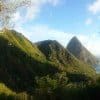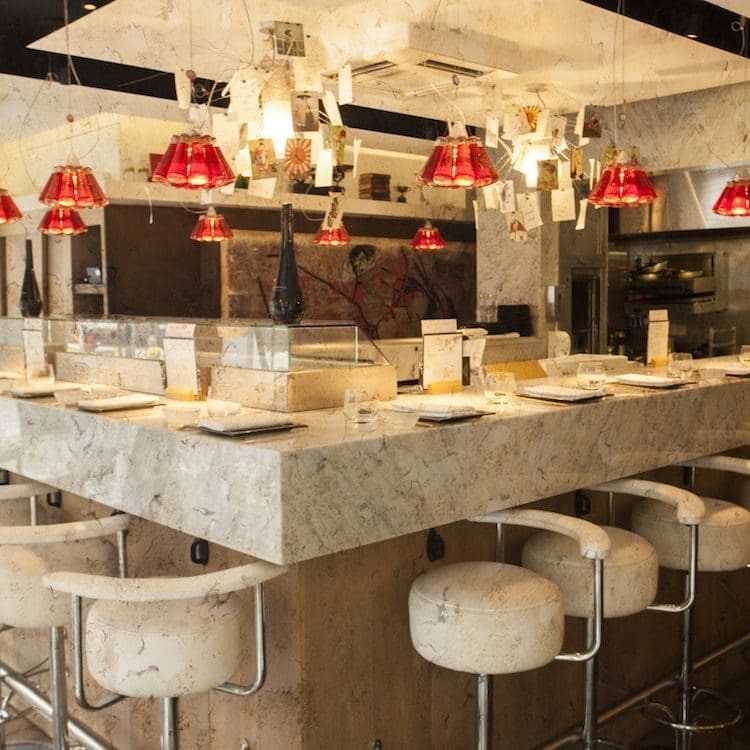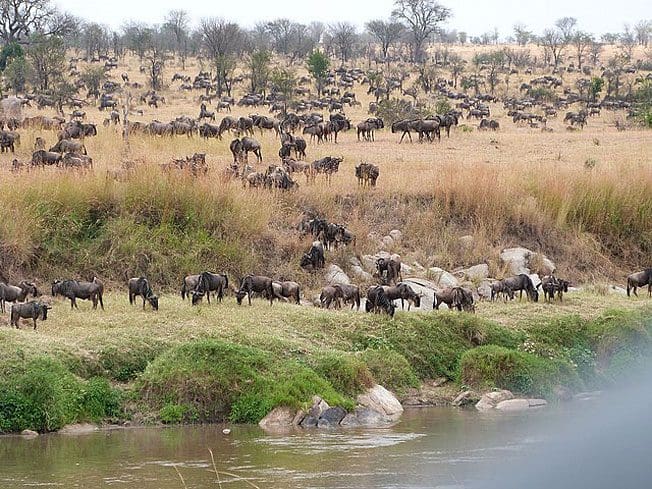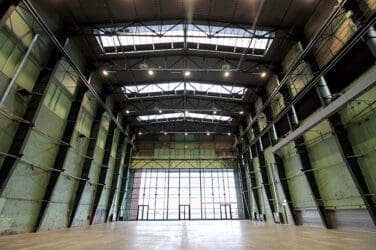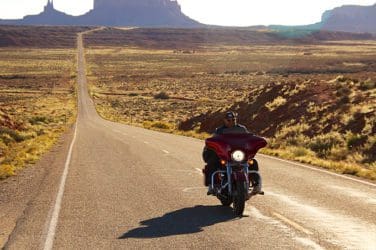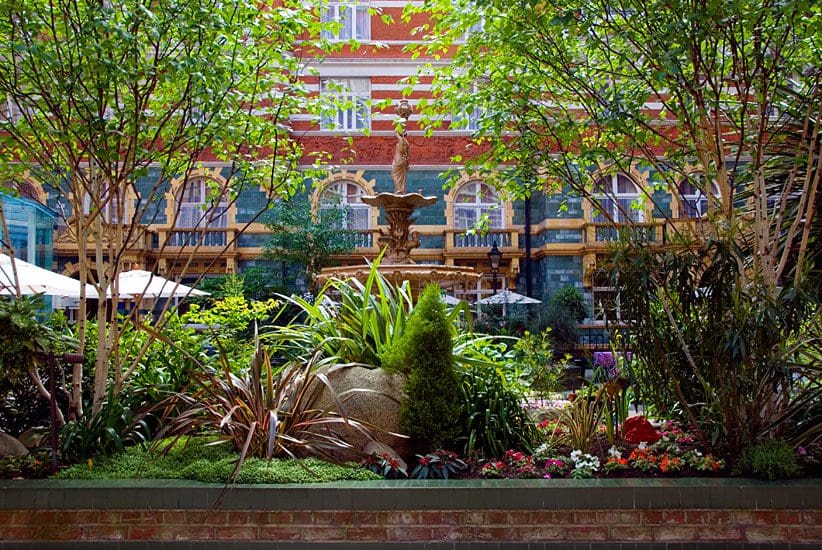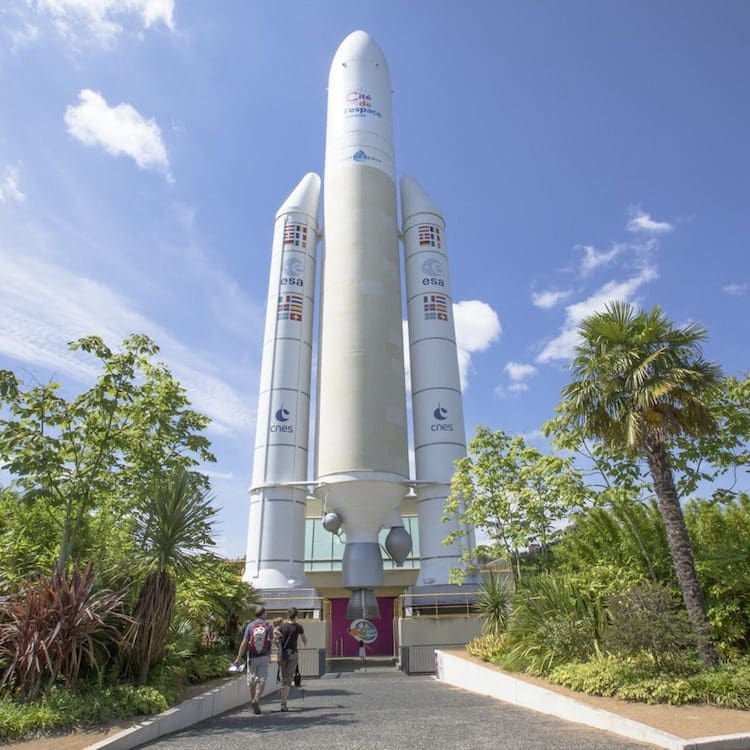Words: Adam Boatman
Look up St. Lucia on Google Maps and all you can see is a small island in the Caribbean that looks like it’s being bullied by its neighbours, Martinique, Bermuda and Saint Vincent.
Flip it to satellite mode and what you see is a lush green blob haunted by wisps of cloud. Zoom in to Castries, the capital, and you can see the red-roofed buildings of the market surrounding the harbour. This sum up all I knew before I stepped out of a plane at Vieux Fort Airport into a saturated, hot and cloudy afternoon.
Oh, and that St. Lucia hosts one of the world’s most famous jazz festivals, the St. Lucia Jazz and Arts Festival – and that I was visiting to check out its 25th anniversary edition, featuring George Benson, Kool & the Gang and Shaggy. Not bad for such a small island.
St. Lucia is a strange and beautiful place. A favourite local story tells of how, many years ago the island was fought over on fourteen separate occasions by the English and French, each winning seven times. In the final battle between the two colonial powers the English took St Lucia back from the French, who understandably lost their appetite for the island after that.
The first time I heard this story I was sitting overlooking Marigot Bay with a darkening sunset illuminating the few boats moored serenely in the harbour. It was peaceful, unbelievably peaceful; and as I strolled back to my generously proportioned room for my first sleep in my four-poster bed I could feel a year’s worth of stress slowly sliding off my soon-to-be sun-beaten shoulders.
My day ahead consisted of zip-lining through a jungle, a tapas lunch, a tour of the island’s only microbrewery and a late night foray into some island jazz.
More importantly, however, it was also my first encounter with the people of St. Lucia. In many ways they are St Lucia, and without them my trip would have been far less magical. So let me start by introducing possibly the coolest man who has ever lived. His name was David, he arrived in a snow white chariot, filled with ice cold air and he was to be our driver for the next few days. David is a Rastafarian who lives in the jungle in the Babonneau region. People living in Babonneau live off the land and in David’s words attempt to live with nature rather than against it.
Though cool in itself this was not the reason I loved David. It was his laid back, friendly attitude to everything. It seemed he new everyone, and never missed a chance to shout a hello. Everything we did for the first few days, he was there waiting for us afterwards, and guiding us through. His knowledge was exceptional. Essentially, he was an absolute dude and I want that on the record.
Prior to heading up the mountain we had to suit up and sign our lives away. With our harnesses, hair nets and helmets we looked like paramilitary dinner ladies. Kennedy and his young sidekick Joel led us on our journey up the mountain. Again I was astounded by the knowledge of our guides. Kennedy brought the surrounding rainforest to life as we drifted ever upwards from the river into the canopy.
Kennedy’s knowledge and the rides on the cable car up and down were by far my favourite parts of our zip-line experience; particularly the views of the Atlantic and Caribbean. The moments zipping in between trees forty feet off the ground are seriously fun, the minutes spent clipped to a tree trunk 40 feet off the ground are less so. http://www.rainforestadventure.com/st-lucia/.
After some salt fish fritters and garlic chicken tapas at Rodney Bay, we headed just round the corner to the only microbrewery on the island, Antillia Brewing Company. Started by a Canadian, the brewery proudly boasts a single tiny room with all the equipment needed to turn US, Canadian and UK malt and hops into a singularly St Lucian brew.
The results are startlingly good. The apricot stout particularly stood out, and not just because it had a rich undertone of the delicious fruit, but also because its apricot flavour isn’t what you’d expect. It is not the tiny, drippingly moist fruit you see on English trees. It is a hard-skinned almost grapefruit-sized fruit with a mango-esque flesh that yes, has the unmistakable taste of apricot. These fruits only appear for a fraction of the year, unlike the rest of the food on the island which seems to weigh down every single tree you pass.
Straight after dinner, we finally set out for the first night of the event for which we had come to the island: the St. Lucia Jazz Festival. Now celebrating its 25th year, it has slowly evolved from little known island jazz acts into a world-renowned festival boasting headline acts like Shaggy, Marc Anthony and Kool and the Gang. Shame on us really, but to be honest Shaggy, the Jamaican Hasselhoff, can really put on a show. Though he must be pushing fifty now, he gyrates more than ever and seemed determined to impregnate the hot evening air that caressed his violently sweating body.
The festival itself sits out on Pigeon Island, a beautiful national park reconnected to the land by a strip of road reclaimed from the sea. The sizeable Signal Peak loomed in the distance, lit up every so often by a flash from the spot lights surrounding the festival. Palm trees swung sleepily in the breeze and though my eyes should have been glued to the disturbing spectacle on the stage, I couldn’t help but wonder down past the food stalls selling island curries and sit for a minute on the beach. St. Lucia was full of moments like this. The island begs you not to rush and you’d have to be a fool not to listen.
Before heading home we took a quick detour through a street party in Gros Islet. St Lucians know how to street party. There was no stupidly twee bunting, or Victoria sponges. Food was being smoked in barrel barbeques all along the street and a speaker system had been set up in the middle of a cross roads where people were singing and dancing in a huge entwined mass.
We were to spend three days at Capella Marigot Bay and thankfully the next day I had a little more time to explore the beautiful resort. Instead of soaring through trees, for lunch we managed to crawl to the pool-side restaurant that pretty much exclusively serves sashimi. Tuna, salmon, octopus, lion fish…but I was most interested in the lion fish. It’s not exactly common on menus anywhere else I’ve been, but in St Lucia it’s abundant.
It turns out that it’s because they’re actually a pest. They’ve invaded the coast lines, and being a highly poisonous bastard you can imagine it’s not the best guest to have. So St Lucia, at a lost what to do turned to restaurants for help; and help they did. There are hundreds of ways to consume lion fish on the island and everywhere you go. It’s surprisingly tasty and in many ways the most guilt-free animal I’ve ever eaten.
Another local deviant delicacy is rum and Marigot Bay do rum right. Not only have they stocked their cellars full of the stuff, but they have devoted an entire cave just for its consumption, named the ‘Rum Cave’. It was down here we fled from the afternoon sun for a quick rum tasting. Our host for the tasting led us through five different rums with varying quality and wildly varying strength.
There were two rums in particular that stood out to me. The first, Admiral Rodney, became my island drink and had a spicy, subtle undertone of tobacco. It was really flavourful and tasted much more nuanced any rum I’ve had before. I now know that this is because most of what we get in England is bollocks. It’s essentially fake rum with flavouring added to make it taste like it’s made with molasses.
The second stuck out because it nearly broke us. It was 90% vol., but heavily spiced, and after a few mouthfuls I felt like I’d been sipping ether straight from the bottle, which to be honest… not far off. We recovered, but the stairs up from the rum cave felt significantly longer than they had on the way down. Capella Marigot Bay run a day course if a tasting isn’t enough for you. Using local ingredients to make your very own spiced rum, the bottle is then sent to you six months later once it’s brewed.
Castries market is in the centre of the capital and while it is filled with touristy tat it also boasts an amazing selection of island ingredients, from the aforementioned apricot to homemade pepper sauce; and if you’re feeling really lazy (and I was) you can buy a glass bottle pre-stuffed with spices to make your own spiced rum at home. The smells in the market were intoxicating, particularly the unmistakable must of oregano and thyme.
We couldn’t stay there forever though and it wasn’t long before we were back on the road to the jazz festival. The atmosphere on the Saturday was different. Families roamed the stalls, and it didn’t have that down and dirty vibe it picked up after dark. Not that I’m bashing down and dirty. Sometimes that’s exactly what you need. Furthermore, we could now see out towards Martinique and view Signal Peak in its full glory
After a man in a gold sequin top, who had Shaggy’s moves, but no self-deprecating smile that suggested he was in on the joke, came Kassav. Kassav were from Martinique, and sung and spoke in Creole. Maybe it was this, or maybe the fact that they were awesome, but they had a huge following.
It was following Kassav’s performance that I took a break towards the corner of the festival and met Chef Sherlock, a man with his own YouTube channel and an abundance of stories. His loves in life were food, heavy metal and choppers (the bikes, not the teeth), and after travelling the world he’d settled in St Lucia for a while – mainly for the food.
St. Lucia is blessed with high volcanic peaks, awash with rainforest and though not blessed with the endless beaches its glorious coastline is a sight to behold. And the food? Oh the food. In a country with its fair share of poverty not a single person is starving. Not a single person is even hungry, or living off £1 meals from Megabite. The soil is so fertile and the sun so constantly shining that everything grows everywhere. You can take an evening stroll through the jungle and eat your dinner on the way. It’s truly remarkable.
“What does this mean for me?” I hear you asking. “I am neither starving, nor trapped in a rainforest. I just want delicious food.” Let me ask you this, have you ever tasted sunshine? I have, almost every time I ate anything in St Lucia. You can taste sunshine. Just like you can taste when an animal has had a happy life, or a grape has grown on the sunniest slopes, you can taste when a plant has been given everything the sun and earth can offer.
The morning after the second day of the festival I woke up to actual jazz, a steel drum band and stilt walkers. No, I hadn’t got hammered and joined the St Lucian circus: the resort had put on a jazz brunch for us. Chicken with creole sauce accompanied by a twenty strong steel band is a fantastic way to start a Sunday.
Today though was also our final day of the festival, with Kool and the Gang headlining. They did not let me down, they didn’t let St Lucia down and they didn’t let themselves down. They were so, so good. The Bell brothers still had it and Ronald in particular rocking out on a saxophone wearing a Beetlejuice suit looked back in his prime. When they started ‘Get Down On It’, the crowd went crazy.
Again the sun had long set by the time we left the festival. Along winding roads through the darkness David took us down South into the mountains. We were on to our new hotel and the second part of our adventure, and it really was a distinct divide. Gone were the lowlands, beaches and boats. On its way was a rainforest hideout, perched high up opposite the Pitons (the twin iconic teeth like mountains of St Lucia, after which everything seems to be named).
Reaching my room in the darkness of midnight, I realised that there were only three walls. That’s not a metaphor. Where there should have been a fourth there was only darkness and the noises of the night. My imagination immediately set to work and I crawled into bed that night, distinctly nervous of the enormous open space at the end of my room.
If going to bed was my darkest hour in St Lucia waking up was certainly my brightest. At the end of my room, just in front of the former wall of darkness sat a pretty sizeable private pool with my own swing seat. Behind was a surreal, breathtaking painting of a view. The rainforest rolled down from the precipice protecting my room to a beach about a kilometre away, and a few hundred metres down, the sea stretching out before it. Shrouded in mist, seemingly bursting forth from the rainforest, dissecting the sea, was Gros Piton, the larger of the twin peaks.
Splashed across the whole thing like a Bob Ross final touch, growing from the hills to my left sat a perfectly-defined double rainbow. No photo can do it justice and no words can be too hyperbolic. It is the closest imitation of paradise I have ever seen. Not one to sit on ceremony I promptly stripped off and climbed into my pool, and sat staring at the view until it burnt itself to my retinas.
Down at breakfast the view was equally as majestic, with a view of Petit Piton on the opposite side of Sugar Beach from his bigger brother; the two together looking like God’s canines towering over the landscape. Ladera is billed as a rainforest escape, and despite having a quarter of my walls missing I felt utterly isolated. The beach was so far away that even with the binoculars I found sitting in a hamper in my room (a nice touch) I couldn’t see a single person.
For breakfast, I had a mix of fried and baked ‘bakes’, a Caribbean specialty, stuffed with salt fish. Living in Brixton, I’m partial to a bit of salt fish, but it was only on taking the first delicious bite of these hefty treats that I realised what a poor substitute ‘Atlantic cod’ out of a three month old plastic pack is. The other breakfast novelty was cacao tea with sugar water mixed in from a shot glass. It smells like hot chocolate, but lacks the sweetness and is an odd yet moreish mixture of coffee and chocolate. Freshly-squeezed mango juice, pressed that morning from one of the hundreds of trees surrounding us, local pastries and homemade guava jam capped a perfect breakfast.
Afterwards we had an activity planned that I had been waiting for since arriving on the island – a tour of Hotel Chocolat. It turned out to be a two-minute walk from Ladera, with revealing red-leafed cocoa trees flanking the driveway. Yes, it actually is a hotel with a surprisingly amazing restaurant and, yes, they do make chocolate there (on a very small scale), but primarily it’s a cacao plantation.
Our tour of Hotel Chocolat was led by a fantastic lady with a precise, militaristic delivery. Upon reaching the cacao pods, she needed a volunteer. I stepped forward. I picked the pod with a few firm twists, as she had shown me. The reason you twist and not simply yank is to preserve the tiny nubbins that will grow the next pod, year after year. I was not going to be the one to put down this nubbin, taking chocolate from a poor child’s hand.
Fermenting the beans is a cool and bizarre process, considering the end result. Each pod contains dozens of white, slippery beans that when sucked (not chewed, unless you want a nasty bitter surprise) taste a lot like a more zesty kiwi. By fermenting these beans under banana leaves and hessian sacks they turn from a crisp white to terracotta. After fermenting they are dried for a while in the glorious St Lucia sun before being sent to England to be turned into chocolate and consumed by grubby fingers that have no idea how much love went into growing them. We got to be a part of this process, grafting our own baby cacao tree. One day someone’s gonna put my chocolate in their mouth… and love it.
The best part was yet to come. Round a large table covered by scolding hot mortars, pestles, cocoa nibs, cocoa butter, sugar and moulds, we made our own chocolate bar. This was a job our guide called ‘tedious’ work. I believe she meant strenuous, but if not I can see what she meant. I spent twenty minutes in 30-degree heat mashing cocoa nibs, cocoa butter, sugar and a fair amount of my own sweat together.
It was with relieved hands and heart that I eventually traipsed back to the restaurant, a chocolate bar and a blister richer. Luckily the food at Hotel Chocolat turned out to be the perfect salve. Most of the dishes took ingredients from the estate and therefore often put strange twists on dishes, with barely a single miss. The tuna and dorado tartare with papaya and mango was sharp, and unbelievably fresh. The gin cured Mahi-Mahi was fragrant with juniper and melted instantly the second it touched my tongue.
For at least four hours following my Hotel Chocolat experience I was convinced that this was to be my best food on the island. Unluckily for them and luckily for me Ladera shattered this misconception. For the evening meal took St Lucian food to new heights.
We had dinner with our hosts the first full evening at Ladera. Live music rang out from a reggae band, the atmosphere a perfect microcosm of the St. Lucian vibe. My starter was a conch salad. Like squid, only a little chewy, but with more taste of the sea, conches are delicious. Mixed together on a bed of lush greenery, it was a strange mix of surf and turf that could easily supplant steak and scampi in the future – if only I could find conch anywhere else.
My main course was a christophene pepper pot. A traditional dish that bubbled in its terracotta pot, its rich earthy aroma buttered me up before its nutty christophene (a Caribbean carb rich vegetable) and beef in spicy sauce almost finished me. It was followed by one of those few moments in life of pure unadulterated happiness. One of those moments when you grin like an idiot from ear to ear and wake up in the morning ashamed of the hyperbole the night before. This for me was a chocolate lava cake. It was melt-in-the-mouth pure chocolate with the intense flavour that comes from having plantations next door. Unsurprisingly, that night I slept like a baby.
Our next day was to be our last of real activity, getting up early to take a quick stroll along the Tet nature trail. Billed as a moderate hike, it’s barely a light walk. But the views are absolutely stunning, and the local flora our guide pointed out was unique. Particularly awesome was the deadlock plant, its righteous red dreads hanging down from its leafy surrounds. Pineapple plants dotting our path, we eventually witnessed the perfect panoramic 360˚ view of St Lucia from above. To one side lay the Pitons and the sea. To the other rolling away from us towards the centre of the island a huge expanse of farmland.
After Tet came the sulphur springs. This part of St Lucia is essentially one massive active volcano. I’ve always quite liked the smell of sulphur and the clouds that rose from the bubbling hell pit below looked like something out of a sci-fi film.
That night we ate in the amazing restaurant again and went to bed equally happy, except for one nagging thing. The next day was to be our last on the island.
St Lucia took my expectations and smashed them into tiny little pieces. I never believed I would be someone telling you to go the Caribbean. There’s so much more to St Lucia than silver service and beaches, and in some ways it’s surprisingly affordable. In fact if you’re looking for somewhere to sit on a beach for seven days I would suggest anywhere else in the Caribbean, or anywhere with beaches and thousands of sun loungers populated by sunburnt Germans. If you want to explore a beautiful volcanic island with taste bud blowing food and a gentle, but vibrant culture, please for the love of god head to St Lucia. If you don’t believe me have a word with Kool & the Gang, I’m sure they’ll set you right.
Words: Adam Boatman
Rates at Capella Marigot Bay start at just £475.
Rates at Ladera start at £396 per night and rooms can be booked all year round.
Return flights with British Airways start from £564 per person
More info on travelling to Saint Lucia and popular attractions can be found via the Saint Lucia Tourist Board.


